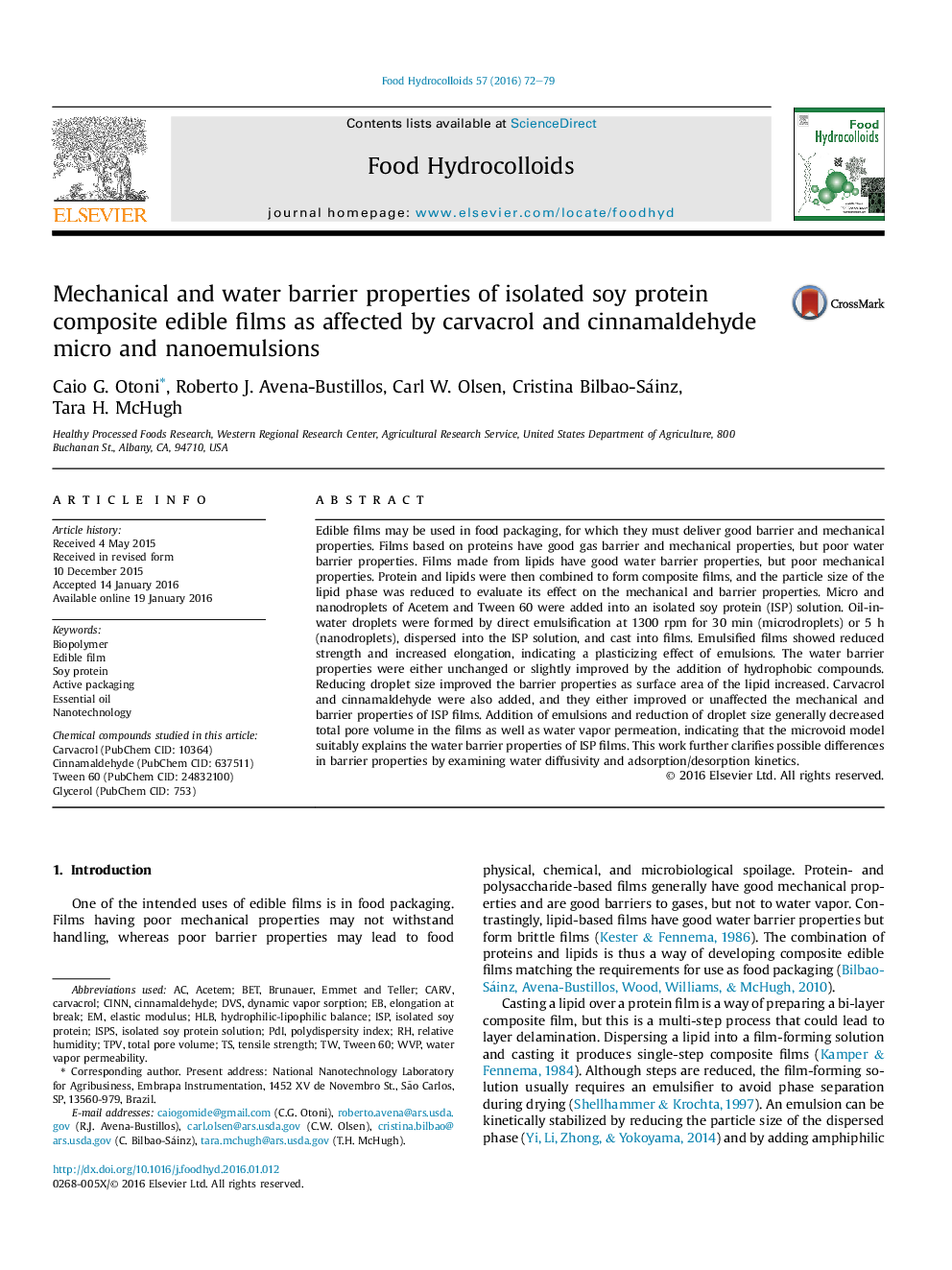| کد مقاله | کد نشریه | سال انتشار | مقاله انگلیسی | نسخه تمام متن |
|---|---|---|---|---|
| 604212 | 1454420 | 2016 | 8 صفحه PDF | دانلود رایگان |
• Edible films were formulated with isolated soy protein and micro or nanoemulsions.
• Longer mixing times reduced droplet size to the nanoscale and polydispersity.
• Emulsions plasticized the isolated soy protein films, regardless of droplet size.
• Droplet miniaturization reduced porosity and improved water barrier properties.
• As suggested by the microvoid model, water vapor probably permeated through pores.
Edible films may be used in food packaging, for which they must deliver good barrier and mechanical properties. Films based on proteins have good gas barrier and mechanical properties, but poor water barrier properties. Films made from lipids have good water barrier properties, but poor mechanical properties. Protein and lipids were then combined to form composite films, and the particle size of the lipid phase was reduced to evaluate its effect on the mechanical and barrier properties. Micro and nanodroplets of Acetem and Tween 60 were added into an isolated soy protein (ISP) solution. Oil-in-water droplets were formed by direct emulsification at 1300 rpm for 30 min (microdroplets) or 5 h (nanodroplets), dispersed into the ISP solution, and cast into films. Emulsified films showed reduced strength and increased elongation, indicating a plasticizing effect of emulsions. The water barrier properties were either unchanged or slightly improved by the addition of hydrophobic compounds. Reducing droplet size improved the barrier properties as surface area of the lipid increased. Carvacrol and cinnamaldehyde were also added, and they either improved or unaffected the mechanical and barrier properties of ISP films. Addition of emulsions and reduction of droplet size generally decreased total pore volume in the films as well as water vapor permeation, indicating that the microvoid model suitably explains the water barrier properties of ISP films. This work further clarifies possible differences in barrier properties by examining water diffusivity and adsorption/desorption kinetics.
Figure optionsDownload as PowerPoint slide
Journal: Food Hydrocolloids - Volume 57, June 2016, Pages 72–79
